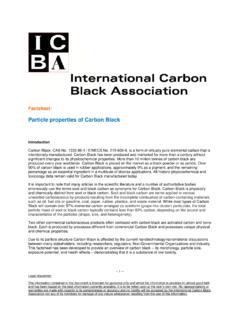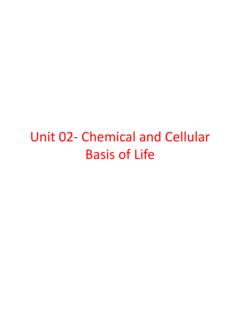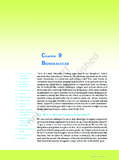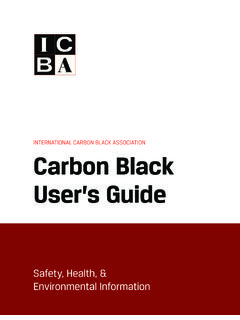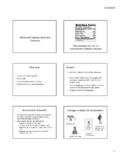Transcription of Carbon Black User’s Guide
1 Carbon Black User s GuideSafety, Health, & Environmental InformationBACIIMPORTANT NOTEThis booklet is not a Material Safety Data Sheet (MSDS),nor is it intended to serve as an MSDS substitute. Pleasemaintain and review the most current MSDS, availablethrough your Carbon Black supplier, prior to workingwith this product. PurposeThis Guide summarizes essential health, safety,and environmental information for operationaldesign, maintenance, training, emergencyresponse and handling practices that may beassociated with the use of Carbon Black . Theinformation contained herein is provided tosupplement the knowledge of trained and qualified users of Carbon Black . This publication represents the current knowledge of the International Carbon BlackAssociation (ICBA) members as of the date ofpublication.
2 Users should remain informed onnew developments and information about Carbon Black properties, handling technology and regulatory requirements thatoccur following the publication date. Any questions should be addressed to your carbonblack supplier. ContentsGENERAL INFORMATION 1 What is Carbon Black ? 1 How is it Produced? 1 Carbon Black , Soot, and Black Carbon 2 Other Particle Size Characteristics 3 SAFETY 4 Fire and Explosion 4 Storage and Handling 4 Confined Space Entry 4 Housekeeping 4 Acute First Aid 5 HEALTH 5 Overview 5 Human Studies 5 Animal Studies 6 Carcinogenicity 6 Mutagenicity 7 Reproductive Effects 7 Chronic Ingestion 7 Eye Contact 7 Skin Contact 7 Sensitization 7 Carbon Black in Materials in Contact with Foodstuffs7 Animal Irritant Tests 7 OCCUPATIONAL HYGIENE 7 Overview 7 Exposure Assessment 8 Carbon Black Dust Monitoring 8 Engineering Exposure Controls 8 Respiratory Protection 8 Occupational Exposure Limits 9 Medical Surveillance 9 ENVIRONMENTAL 9 Disposal 9 Air 10 Water 10 Leaks or Spills 10 Shipping Containers 10 Transportation 10 Environmental Protection Regulations 10
3 National Registries and Other Applicable Regulations 11 APPENDIX A:Mortality and Morbidity Studies OverviewAPPENDIX B: Selected Occupational Exposure Limits for Carbon BlackREFERENCESG eneral InformationWHAT IS Carbon Black ? Carbon Black [ NO. 1333-86-4] is virtuallypure elemental Carbon in the form of colloidal particles that are produced by incomplete combustionor thermal decomposition of gaseous or liquidhydrocarbons under controlled conditions. Its physical appearance is that of a Black , finely dividedpellet or powder. Its use in tires, rubber and plasticproducts, printing inks and coatings is related toproperties of specific surface area, particle size andstructure, conductivity and color. Carbon Black isalso in the top 50 industrial chemicals manufacturedworldwide, based on annual tonnage.
4 Currentworldwide production is about 18 billion poundsper year [ million metric tons]. Approximately90% of Carbon Black is used in rubber applications,9% as a pigment, and the remaining 1% as an essentialingredient in hundreds of diverse applications. Modern Carbon Black products are direct descendantsof early lamp blacks first produced by the Chineseover 3,500 years ago. These early lamp blacks werenot very pure and differed greatly in their chemicalcomposition from current Carbon blacks. Since themid-1970s, most Carbon Black has been producedby the oil furnace process, which is most oftenreferred to as furnace Black . HOW IS IT PRODUCED?Two Carbon Black manufacturing processes (furnaceblack and thermal Black ) produce nearly all of theworld's Carbon blacks, with the furnace Black processbeing the most common.
5 The furnace Black processuses heavy aromatic oils as feedstock. The productionfurnace uses a closed reactor to atomize the feedstockoil under carefully controlled conditions (primarilytemperature and pressure). The primary feedstock isintroduced into a hot gas stream (achieved by burninga secondary feedstock, , natural gas or oil) whereit vaporizes and then pyrolyzes in the vapor phaseto form microscopic Carbon particles. In most furnacereactors, the reaction rate is controlled by steam orwater sprays. The Carbon Black produced is conveyedthrough the reactor, cooled, and collected in bagfilters in a continuous process. Residual gas, or tailgas, from a furnace reactor includes a variety of gasessuch as Carbon monoxide and hydrogen. Most furnace Black plants use a portion of this residualgas to produce heat, steam, or electric power.
6 (SeeFigure 1. Typical Furnace Black Process Diagram.)OOIILLPPRREEHHEEAATTEERRBBAAGGF FIILLTTEERRPPEELLLLEETTIIZZEERRRRAAIILLR ROOAADDCCAARRSSTTRRUUCCKKSSBBAAGGSSSSUUP PEERRSSAACCKKSSDDRRYYEERRBBUULLKKSSTTGGR REEAACCTTOORRWWAASSTTEEGGAASSCCOOMMBBUUS STTOORRAAIIRRPPRREEHHEEAATTEERR oilairwaste gasCogen or EnergyRecovery/Flarewaternatural gas or tail gasnatural gasFigure Furnace Black Process DiagramGeneral PropertiesTables 1 and 2 report general information related to Carbon Black . Detailed physical and chemicalanalysis for a particular grade of Carbon Black may be requested from your Carbon Black 1. Commercial names and chemical identification of Carbon blackChemical NameSynonymsCAS NameCAS Registry NumberChemical (Molecular) FormulaCarbon BlackAcetylene Black , Channel Black ,Furnace Black , Gas Black ,Lampblack, Thermal Black Carbon Black1333-86-4 CTable 2.
7 Properties and characteristics of Carbon Black (furnace process)12 (as Carbon )solid: powder or pelletLEL: not applicableUEL: not applicable50 g/m3( Carbon Black in air)>932 F (>500 C)>600 F (>315 C)>10J>45 seconds: Not classifiable as Highly Flammable or Easily Ignitable Combustible solidWater: insolubleSolvents: insolubleBlackFormula weightPhysical stateFlammable limits (vapor)Lower limit for explosionMinimum ignition temperatureVDI 2263 (German), BAM Furnace Godbert-Greenwald FurnaceMinimum ignition energyBurn Velocity:VDI 2263, EC Directive 84/449 Flammability classification (OSHA)SolubilityColorThe thermal Black process uses natural gas, consistingprimarily of methane or heavy aromatic oils, asfeedstock material. The process uses a pair of furnacesthat alternate approximately every five minutesbetween preheating and Carbon Black natural gas is injected into the hot refractory-lined furnace, and, in the absence of air, the heatfrom the refractory material decomposes the naturalgas into Carbon Black and hydrogen.
8 The aerosolmaterial stream is quenched with water sprays andfiltered in a bag house. The exiting Carbon blackmay be further processed to remove impurities, pelletized, screened, and then packaged for hydrogen off-gas is burned in air to preheat thesecond furnace. Carbon Black , SOOT, AND Black CARBONC arbon Black is not soot or Black Carbon , which are the two most common, generic terms applied to various unwanted carbonaceous by-products resulting from the incomplete combustion of Carbon -containing materials, such as oil, fuel oils or gasoline, coal, paper, rubber, plastics and wastematerial. Soot and Black Carbon also contain largequantities of dichloromethane- and toluene-extractable materials, and can exhibit an ash contentof 50% or more. Carbon Black is chemically and physically distinctfrom soot and Black Carbon , with most types con-taining greater than 97% elemental Carbon arranged2as aciniform (grape-like cluster) particulate.
9 On thecontrary, typically less than 60% of the total particlemass of soot or Black Carbon is composed of Carbon ,depending on the source and characteristics of theparticles (shape, size, and heterogeneity).In the case of commercial Carbon blacks, organic contaminants such as polycyclic aromatic hydrocar-bons (PAHs) can only be extracted under very rigorous laboratory analytical procedures (soxhletextraction using organic solvents and high temperatures). These extracts, though they may besimilar to thosederived from soot, are unique,however, because Carbon Black extracts exist only inextremely small quantities. Water and body fluidsare ineffective in removing PAHs from the surfaceof Carbon Black and, therefore, they are not considered to be biologically available.
10 Two other commercial carbonaceous products often confused with Carbon Black are activated carbonand bone Black . Each is produced by processes different from commercial Carbon Black and possessesunique physical and chemical properties. OTHER PARTICLE SIZE CHARACTERISTICSThe term primary particle diameter raises manyquestions when describing Carbon Black particle manufactured Carbon Black is made eitherby partial combustion or thermal decomposition ofliquid or gaseous hydrocarbons, the final product isincorrectly characterized as having exceptionallysmall particles, sometimes even described as ultrafines(particles < micrometers in aerodynamic diameter).In fact, while the starting particle or nodule of carbonblack is extremely small (typically less than 300nanometers), a complex structure sequence rapidlyfollows within the closed reactor.
